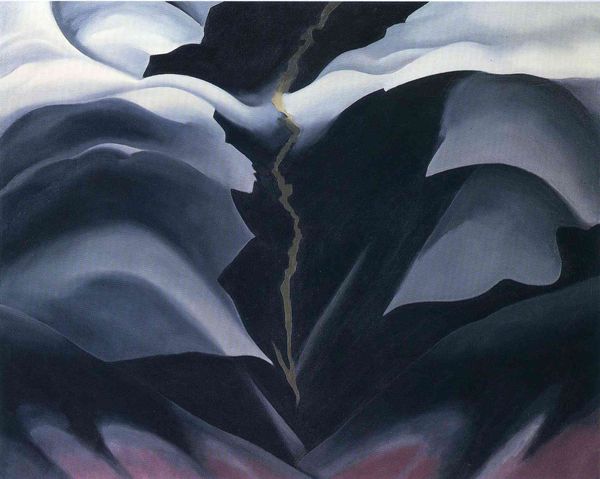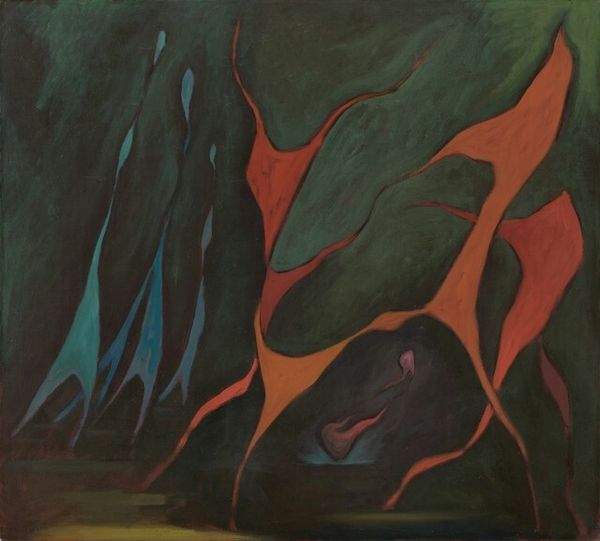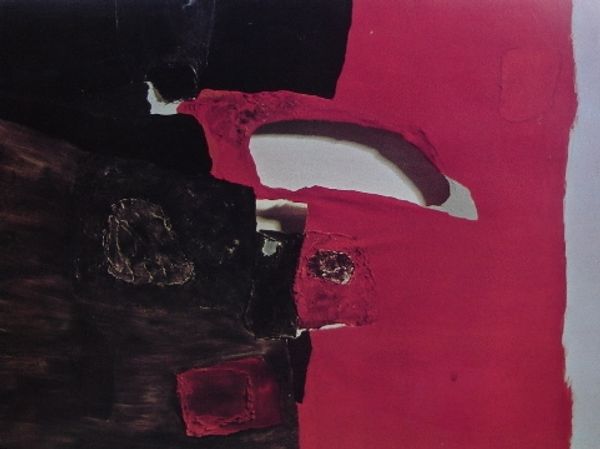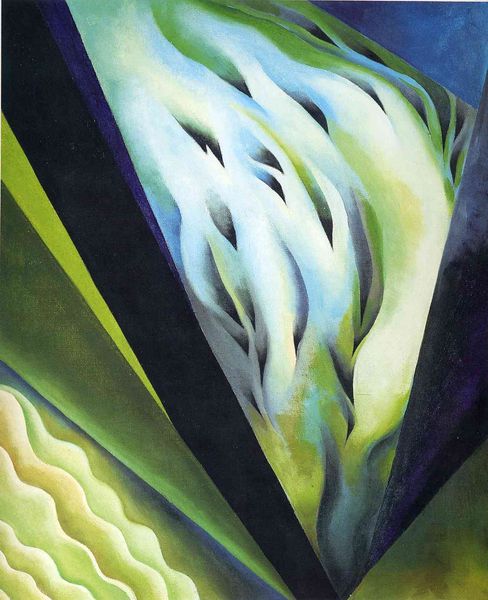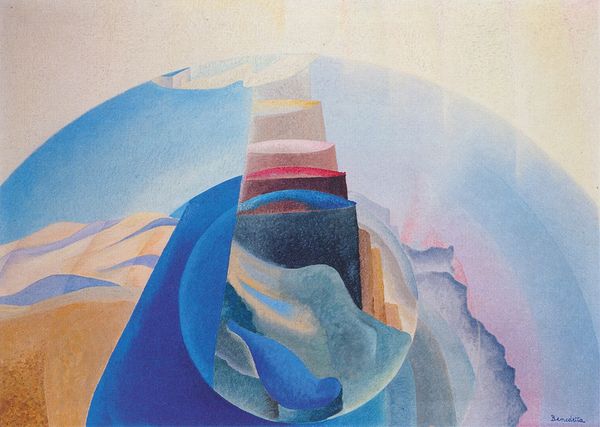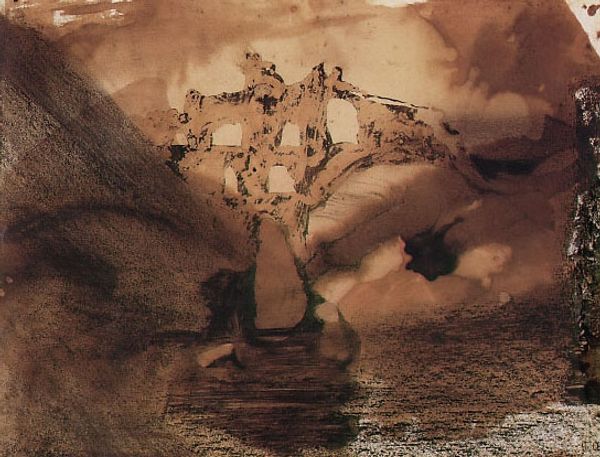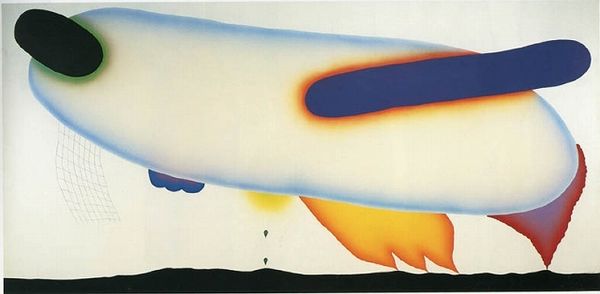
painting, oil-paint
#
painting
#
oil-paint
#
oil painting
#
neo expressionist
#
abstraction
#
modernism
Copyright: Georgia O'Keeffe,Fair Use
Editor: Here we have Georgia O'Keeffe’s painting, "Black Place Green," done with oil paint. I find the abstract shapes and contrasting colours really striking and quite unsettling, to be honest. What’s your interpretation of this work? Curator: I think that unsettling feeling is key. O'Keeffe's engagement with the "Black Place," a region in New Mexico, invites us to consider the complex relationship between landscape, identity, and power. Can you see how the black form dominates the canvas? Editor: Yes, it's the first thing you notice. It almost feels oppressive, especially against the lighter hues. Curator: Exactly. This isn't just a neutral depiction of nature. O'Keeffe is grappling with the legacy of colonialism, resource extraction, and their impact on Indigenous communities. The “Black Place” isn't just a geographic location; it represents a scarred landscape. What do you make of that tension? Editor: That shifts my perspective quite a bit. It’s like she’s using abstraction to highlight the unseen forces at play in the environment. Curator: Precisely. Her abstract vocabulary enables her to articulate themes like environmental degradation and cultural displacement. Also, consider how the so-called feminine associations of flowers get challenged by O'Keeffe through abstraction and monumentality. Editor: So, it’s less about pretty landscapes and more about exposing the political undercurrents? Curator: Absolutely. O'Keeffe forces us to confront uncomfortable truths about the land, our relationship to it, and the power structures that shape it. The painting becomes a visual essay, a point of departure for a wider societal dialogue. Editor: That's fascinating. I'll never see O'Keeffe's work the same way again. Thanks for sharing that perspective. Curator: My pleasure. Keep questioning what you see, and consider who gets to tell the stories of landscapes.
Comments
No comments
Be the first to comment and join the conversation on the ultimate creative platform.
